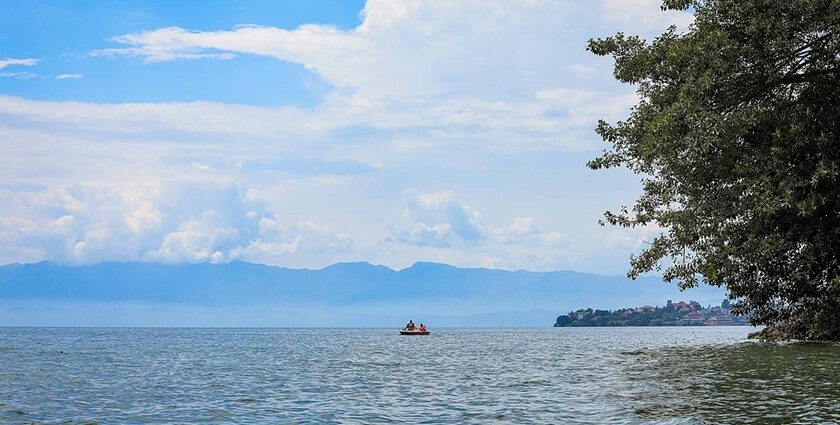Lake Victoria, Malawi, and Lake Natron are some of the famous and popular lakes in Africa. Each one offers something unique, ranging from rich biodiversity to significant cultural importance. Africa is home to many breathtaking lakes that provide a stunning view of the diverse landscape. From the largest freshwater lake to the saline wonders, it is a one-of-a-kind retreat perfect for all nature lovers and adventure seekers alike. It is no wonder Lake Victoria and the rest provide activities like boating, fishing, and wildlife safaris.
10 Famous Lakes In Africa
Here are the most stunning lakes in Africa that offer breathtaking views and unforgettable experiences:
1. Lake Victoria
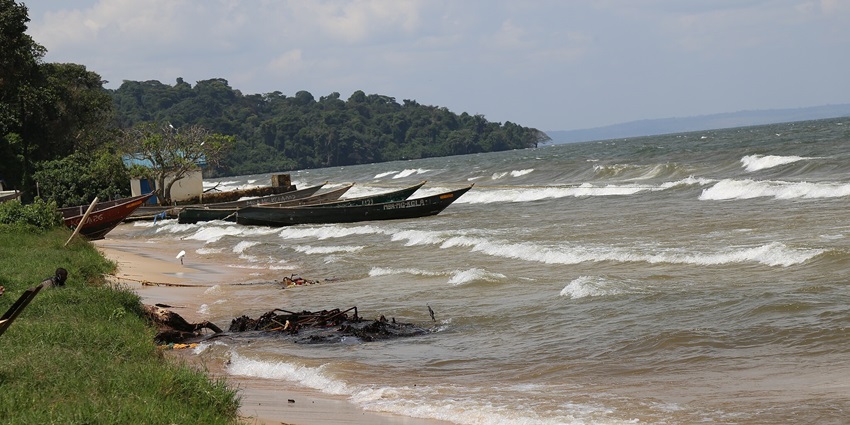
Photo: Jiame Josh / Wikimedia Commons
Lake Victoria, the biggest lake in Africa, encompasses Tanzania, Uganda, and Kenya. It is also the most famous lake in Africa, covering an area of approximately 68,800 square kilometres, making it the world’s second-largest freshwater lake. It is indispensable to the region because it serves as the Nile River’s major water supply; economically, it is important because it supports the local ecosystems and economies. Eco-tourists worldwide flock to this lake to enjoy the boat rides, fishing trips, and island hopping activities. Beach lovers will appreciate the serene Islands in Uganda, and Rubondo Island National Park in Tanzania is famous for its endangered wildlife species.
Location: Tanzania, Uganda, Kenya
Best Time To Visit: June to October
Timings: 24*7
2. Lake Tanganyika
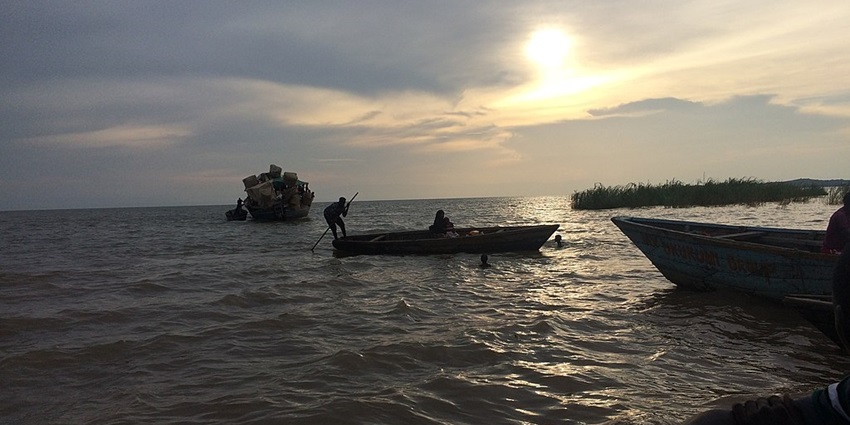
Photo: Ellyswema / Wikimedia Commons
Lake Tanganyika is located within the borders of Zambia, Burundi, the Democratic Republic of Congo, and Tanzania, making it one of the popular lakes in Africa and the second deepest in the continent. Home to almost 18% of the world’s freshwater, it measures a staggering 673 km in length. Over 350 fish species live in this lake, including unique cichlids, which makes it a sanctuary for many underwater organisms. Scuba divers and snorkelers love this place due to its incredible marine life.
Location: Tanzania, Burundi, DRC, Zambia
Best Time To Visit: May to September
Timings: 24*7
3. Lake Malawi

Photo: Joachim Huber / Wikimedia Commons
Lake Malawi, or Lake Nyasa as it is sometimes called, is one of the wonders of Africa for its beautiful views and clear waters. It stretches across three nations, Malawi, Mozambique, and Tanzania, containing over 1,000 species of fish, making this lake one of the richest freshwater ecosystems in the world. Visitors to this economically important lake around Africa can participate in kayaking, snorkelling, and diving activities. While the colourful cichlid fishes make enthusiasts and marine lovers enjoy life, the golden beaches calm the soul. Cape Maclear in Malawi is a favourite spot for backpackers and nature lovers.
Location: Malawi, Mozambique, Tanzania
Best Time To Visit: May to October
Timings: 24*7
4. Lake Turkana

Photo: CaptChandra / Wikimedia Commons
Lake Turkana, Known for its gorgeous blue-green hues, is one of Africa’s most popular lakes. It is located in the north of Kenya and is regarded as the world’s largest desert lake and a UNESCO World Heritage Site. Tourists often visit Central Island National Park to experience its remarkable volcanic terrains. The park boasts three active craters home to crocodiles, flamingos, and other wildlife. In addition to tourism, locals can make a living through fishing by the shores, which provides them with Nile Perch and Tilapia.
Location: Kenya
Best Time To Visit: June to September
Timings: 24*7
5. Lake Natron
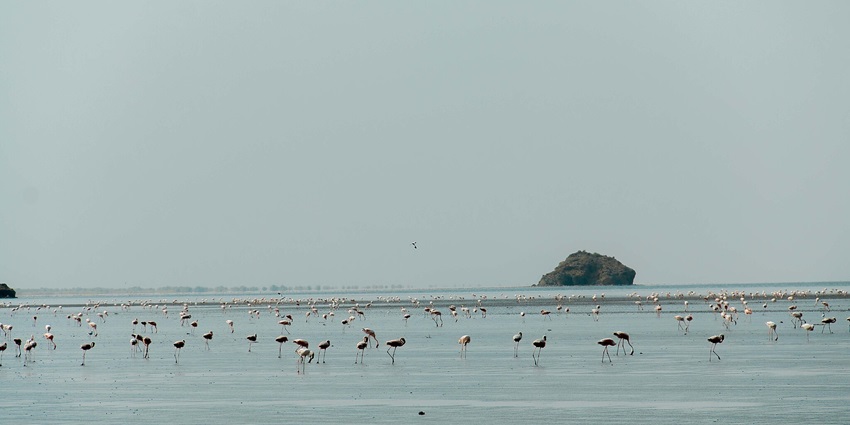
Photo: Bajcetic / Wikimedia Commons
With its intense red water and extreme alkalinity, Natron Lake is one of the most unique lakes in the world. It is located in Tanzania, Africa. While the lake is a breeding habitat for millions of lesser flamingos, the extreme pH levels leave it inhospitable to all other types of life. Tourists visiting this African jewel can view the flamingo nesting sights and partake in guided eco-tours. The surroundings are even more enticing, with the Ol Doinyo Lengai volcano, which is still active. Because of the lake’s strange beauty, it has become a centre for photography and tourism.
Location: Tanzania
Best Time To Visit: June to August
Timings: 24*7
6. Lake Albert
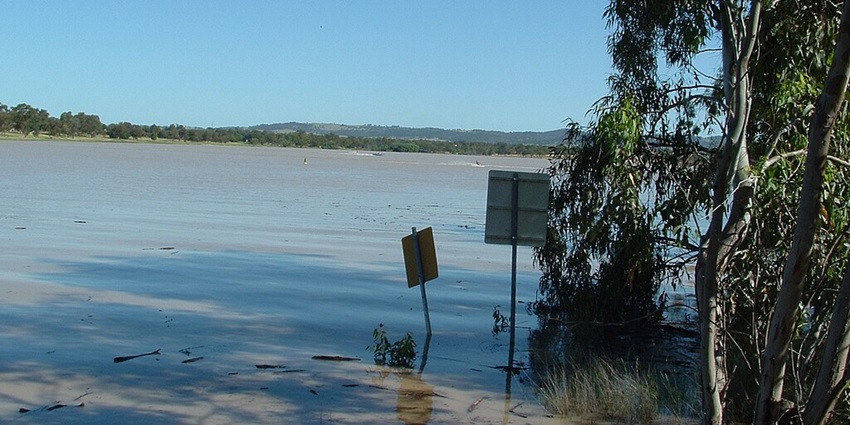
Photo: Bidgee / Wikimedia Commons
Lake Albert, located on the boundary of Uganda and the Democratic Republic of Congo, is famous throughout Africa and is an important component of the Nile system. The lake boasts a surface area of about 5,300 square kilometres, making it one of Africa’s largest and deepest lakes. It has a depth of 51 meters. The stork-like bird and the African fish eagle are some of the many species that make the region a paradise for birding tourism. Primary activities include fishing, where local people depend on the perch and tilapia from the lake.
Location: Uganda, Democratic Republic of Congo
Best Time To Visit: December to February, June to August
Timings: 24*7
7. Lake Kivu
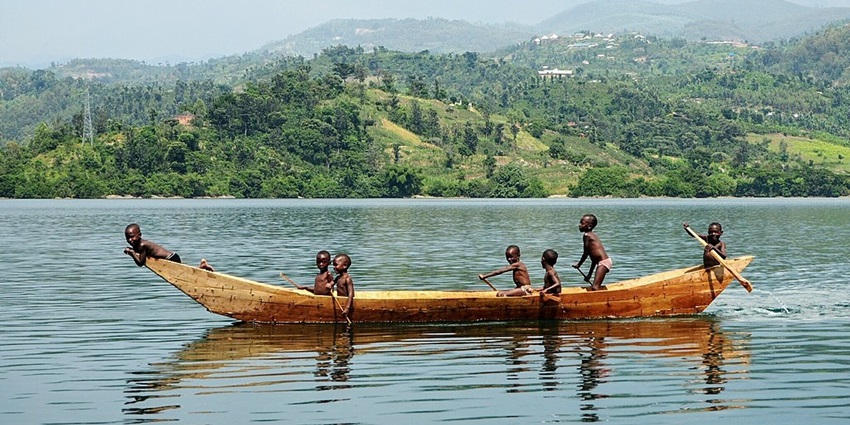
Photo: Hanah136 / Wikimedia Commons
Lake Kivu, partnered by Rwanda and the Democratic Republic of Congo, is one of the most stunning lakes in Africa because of its deep inclination toward beauty alongside its bewildering geological attributes. It is popularly known for its broad surface area of 2,700 square kilometres and its waters being deeply stored with methane, making it rich in energy resources. Famed for being one of the top lakes in Africa, it is blanketed by hills full of coffee plantations and colourful fishing villages. Travellers can enjoy the scenic resorts and boat rides from the lakeside towns of Gisenyi and Kibuye.
Location: Rwanda, Democratic Republic of Congo
Best Time To Visit: June to September
Timings: 24*7
8. Lake Chad
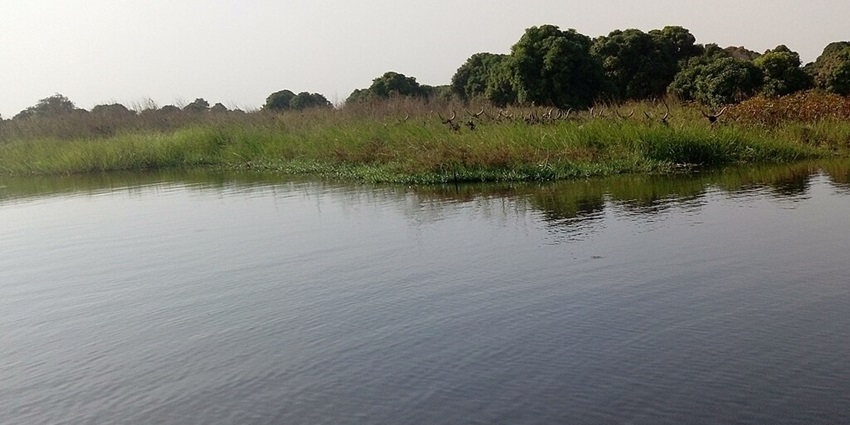
Photo: Hike395 / Wikimedia Commons
Lake Chad, geographically located in four countries, Chad, Niger, Nigeria and Cameroon, was once one of the popular lakes in Africa. Unfortunately, Lake Chad has shrunk considerably as a result of both climate change and improper water management. The lake is crucial for diverse wildlife as well as society. Despite its depleting size, people of different races and cultures depend on the lake for their livelihood, including fishing communities and pastoralists. Tourists visiting the lake’s plentiful shores would have witnessed a range of migratory birds, hippos, and many other rare aquatic species.
Location: Chad, Niger, Nigeria, Cameroon
Best Time To Visit: November to March
Timings: 24*7
9. Lake Kariba
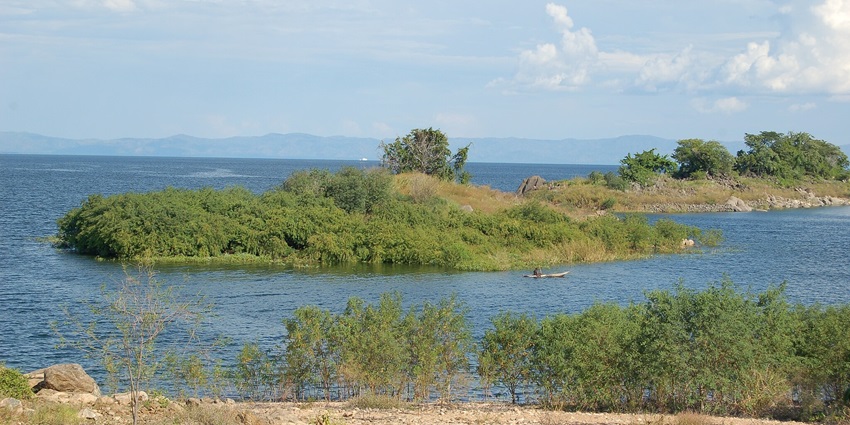
Photo: Joachim Huber / Wikimedia Commons
The largest human-made lake in the world by volume is Lake Kariba, which is still one of the most important lakes in Africa. It is located on the borders of Zambia and Zimbabwe. This artificial reservoir has an area of over 5,400 square kilometres and was formed after the construction of the Kariba Dam in the 1950s. Because this lake is so popular, its tourists can relax in houseboat cruises, partake in fishing, and even go on wildlife safaris. This lake also has a population of hippos, crocodiles, and elephants that inhabit the surrounding Matusadona National Park.
Location: Zambia, Zimbabwe
Best Time To Visit: May to October
Timings: 24*7
10. Lake Assal
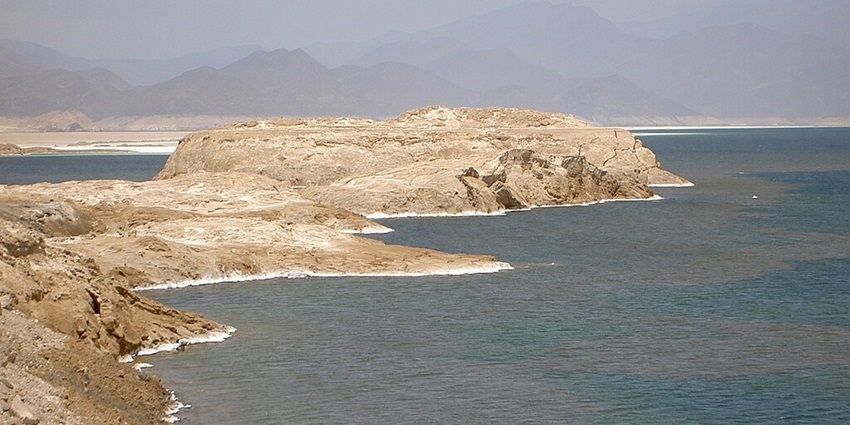
Photo: Fishercd / Wikimedia Commons
Assal Lake can be found in Djibouti, known for its spectacular salt deposits and high salinity, making it one of the most popular lakes in Africa. It is the lowest point in Africa, at 155 meters below sea level, making it even saltier than the Dead Sea. The lake’s surreal white salt flats contrast with the rich turquoise water, completing a dramatic landscape for the eyes to behold. The salt composition of the lake lets visitors float around, coupled with the ability to explore volcanic regions surrounding the lake.
Location: Djibouti
Best Time To Visit: November to March
Timings: 24*7
A tour of the lakes in Africa is an experience that will leave you with memories to treasure, from the freshwater beauty of Lake Victoria to the surreal salt flats of Lake Assal. Not only are these iconic lakes of Africa famous for their beauty, but they are also crucial to their immediate environment and culture. Whether you are an adventure tourist or a passionate nature enthusiast, seeing these famous lakes in Africa is an experience that cannot be missed. Book your tour with TripXL today and experience the stunning vistas of the best lakes in Africa.
Cover Photo: Emmanuelkwizera / Wikimedia Commons


 WhatsApp
WhatsApp
 Twitter
Twitter
